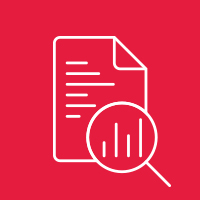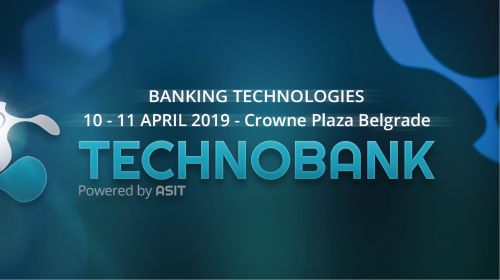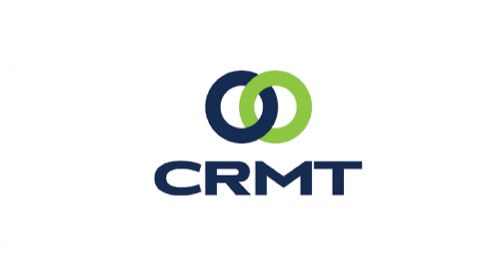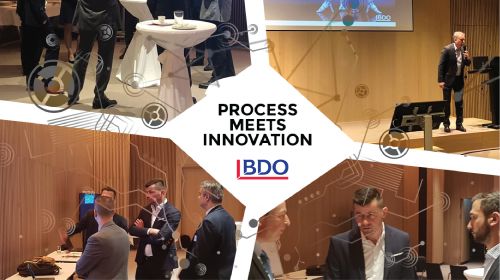Data-driven journey – Which stop are you on?
March 3, 2018
Widespread digitalization turns the world into data, forcing companies to become more data-oriented, data-guided and data-managed, in the business intelligent context, more data-driven. Although the benefits of a data-driven organization are clear and appealing – improved performance, higher profitability, powerful innovations, there are still technological and business challenges that need to be overcome, so that the company could deserve the status ’data-driven’.
The term data-driven marks the culture and technology which enables retrieval, processing, and use of data with the aim of bringing timely decisions which improve the quality of products and services, user experience, operative efficiency, and competitiveness.
Becoming genuinely data-driven, for a company means accessing each decision based on the analysis of the relevant data, allowing the information and conclusions derived from the data to guide the company’s direction. Each employee is expected to regularly collect, analyze and learn from the data. The data are shared and used for planing and reporting, including continuous internal monitoring of defined strategic and business goals.
Today, everything is turned into data. Cars, mobile devices, ever growing number of applications, machines, ‘things’ – generate constant data inflow and transform the world around us.
Intuition, assumptions, and personal perceptions are not sufficient anymore to differentiate you from the competition. To gain genuine competition advantage, a huge amount of relevant data is needed, as well as quick and reliable decision-making process, based on reliable records. The decision not supported by data is suspicious.
For a step forward, a data-driven gadget is necessary. By using data-driven access, it is easy to identify trends which bring information on efficient practices, and help with identifying critical points and detecting possible innovations or solutions. Good news is that today the technology of smart analytics enable every company to become data-driven.
In order to successfully overcome challenges on the data-driven journey, it is crucial that people change their perspective and that the organization changes its processes.
Unstructured data – the data that are not pre-defined or do not fit into traditional data models (textual documents, images, e-mails, sensor data) are a valuable data source and contain important information, but are hard for analytical processing by traditional analytical programs.
Nonintegrated systems – organizations often simultaneously use different information systems which are not interconnected or are interconnected in a very complex way. The result may be returned as complex information, given the different sources, processing methods or naming conventions.
Low data quality or incomplete data – sometimes, the quality of data is simply not good, due to poor data on the input or poor data integration. With such foundation, it is hard to expect good business intelligence.
Noncompliance with IT – business functions for analytics purposes should not depend on the IT department, they must manage analytics and execute it independently. Having in mind the constant pressure on IT to deliver more with lower costs, demands for analytics may end up at the bottom of their list.
Modern analytical platform with its technological achievements represents the foundation of a data-driven company, enabling better data management, executing complex analysis, and data visualization in much clearer way. There are three key elements of a well-set analytical platform:
Data Management
A good analytical platform may process any combination of structured, half-structured, and unstructured data. Automatic integration between analytical platform and other systems ensures that the latest data are always available and adequately used.
Analytics
Transfer of endless character lines is a harder part of the data science. Giving over this task to the specialized software, we leave less room for human errors, and get more room for dealing with the analysis results and their application. Complex calculations and analytics are launched with a click, which makes them available to any business user.
Visualization
Include data and analytics into your genuine strategic vision. Data-driven companies adapt their culture to data and analytics, and modify the perspective of all of their employees.
Choose the tools and technology based on their usability and planned data usage. Change the existing technology and systems to be able to gain better value from data and analytics.
Be an evangelist! Ensure that your management preaches the usage and influence of data on business operations.
Focus on hiring top talents. Build teams of analytics professionals with wide business experience in order to achieve faster insight overview and make better business decisions.
Do not store data if there is no need for it. Emphasize data sharing and user collaboration.
Use data, not only for the improvement of key operations, but also for creating new business channels, and new business models.
Use data for improving user experience. User experience is the difference that makes the difference! Meet your clients, learn which of your products and services they use, analyze and have quicker responds to feedback, recognize the wishes and needs of your customers, be proactive!
Make data collection your primary activity at the level of all your departments, strengthen your employees with analytics, measure and award adoption.
Learn and invest in Machine Learning!
Learn and invest in the Internet of Things!
Data-driven journey has already begun. Don’t forget to choose the right partner, which will be your support on the journey to your goal!
Source: Controlling
Author: Tijana Drljević
What is Data-driven?
The term data-driven marks the culture and technology which enables retrieval, processing, and use of data with the aim of bringing timely decisions which improve the quality of products and services, user experience, operative efficiency, and competitiveness.
Becoming genuinely data-driven, for a company means accessing each decision based on the analysis of the relevant data, allowing the information and conclusions derived from the data to guide the company’s direction. Each employee is expected to regularly collect, analyze and learn from the data. The data are shared and used for planing and reporting, including continuous internal monitoring of defined strategic and business goals.
Why data-driven?
Today, everything is turned into data. Cars, mobile devices, ever growing number of applications, machines, ‘things’ – generate constant data inflow and transform the world around us.
Intuition, assumptions, and personal perceptions are not sufficient anymore to differentiate you from the competition. To gain genuine competition advantage, a huge amount of relevant data is needed, as well as quick and reliable decision-making process, based on reliable records. The decision not supported by data is suspicious.
For a step forward, a data-driven gadget is necessary. By using data-driven access, it is easy to identify trends which bring information on efficient practices, and help with identifying critical points and detecting possible innovations or solutions. Good news is that today the technology of smart analytics enable every company to become data-driven.
What are data-driven challenges?
In order to successfully overcome challenges on the data-driven journey, it is crucial that people change their perspective and that the organization changes its processes.
Unstructured data – the data that are not pre-defined or do not fit into traditional data models (textual documents, images, e-mails, sensor data) are a valuable data source and contain important information, but are hard for analytical processing by traditional analytical programs.
Nonintegrated systems – organizations often simultaneously use different information systems which are not interconnected or are interconnected in a very complex way. The result may be returned as complex information, given the different sources, processing methods or naming conventions.
Low data quality or incomplete data – sometimes, the quality of data is simply not good, due to poor data on the input or poor data integration. With such foundation, it is hard to expect good business intelligence.
Noncompliance with IT – business functions for analytics purposes should not depend on the IT department, they must manage analytics and execute it independently. Having in mind the constant pressure on IT to deliver more with lower costs, demands for analytics may end up at the bottom of their list.
Analytical platform
Modern analytical platform with its technological achievements represents the foundation of a data-driven company, enabling better data management, executing complex analysis, and data visualization in much clearer way. There are three key elements of a well-set analytical platform:
Data Management
A good analytical platform may process any combination of structured, half-structured, and unstructured data. Automatic integration between analytical platform and other systems ensures that the latest data are always available and adequately used.
Analytics
Transfer of endless character lines is a harder part of the data science. Giving over this task to the specialized software, we leave less room for human errors, and get more room for dealing with the analysis results and their application. Complex calculations and analytics are launched with a click, which makes them available to any business user.
Visualization
How to reach the goal? 10 DO’s
Include data and analytics into your genuine strategic vision. Data-driven companies adapt their culture to data and analytics, and modify the perspective of all of their employees.
Choose the tools and technology based on their usability and planned data usage. Change the existing technology and systems to be able to gain better value from data and analytics.
Be an evangelist! Ensure that your management preaches the usage and influence of data on business operations.
Focus on hiring top talents. Build teams of analytics professionals with wide business experience in order to achieve faster insight overview and make better business decisions.
Do not store data if there is no need for it. Emphasize data sharing and user collaboration.
Use data, not only for the improvement of key operations, but also for creating new business channels, and new business models.
Use data for improving user experience. User experience is the difference that makes the difference! Meet your clients, learn which of your products and services they use, analyze and have quicker responds to feedback, recognize the wishes and needs of your customers, be proactive!
Make data collection your primary activity at the level of all your departments, strengthen your employees with analytics, measure and award adoption.
Learn and invest in Machine Learning!
Learn and invest in the Internet of Things!
Data-driven journey has already begun. Don’t forget to choose the right partner, which will be your support on the journey to your goal!
Source: Controlling
Author: Tijana Drljević





 ERP
ERP




















